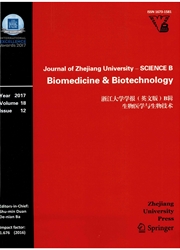

 中文摘要:
中文摘要:
目的:评估中国健康孕妇人群中,母亲孕前体质量指数和孕期增重对新生儿出生体重的影响,以期能指导合理的孕期增重。创新点:选择的人群为健康妊娠的中国孕妇,研究结果可为这一数目庞大的特定人群的孕期甚至孕前体重控制提供一定的理论基础。首次发现了孕前体质量指数可影响孕期各阶段增重与新生儿出生体重之间的关系。方法:本文做了一个样本为3772例中国孕妇的回顾性研究。根据孕前体质量指数将人群分为四组,分别为低体重组(〈18.5kg/m2)、正常体重组(18.5—23.9kg/m2)、超重组(24.0-27.9kg/m2)和肥胖组(228.0kg/m2)。比较这四组间新生儿出生体重的差异,并用多元分析的方法探究孕前体质量指数、孕期增重和新生儿出生体重之间的关系。结论:孕妇孕前体质量指数和孕期增重均与新生儿小生体重呈正相关(表2),极端的孕前体质最指数和孕期增重均会增加异常新生儿出生体重的风险(表3);孕期各阶段增重对新生儿出生体重的影响程度可能还受到孕前体质量指数的影响(表2)。对中国妇女来说,已有的孕期增重指南似乎并不十分合适(图2),制定一个有效的指南刻不容缓。
 英文摘要:
英文摘要:
To evaluate the effects of maternal pre-pregnancy body mass index (pre-BMI) and gestational weight gain (GWG) on neonatal birth weight (NBW) in the population of Chinese healthy pregnant women, attempting to guide weight control in pregnancy. A retrospective cohort study of 3772 Chinese women was conducted. The population was stratified by maternal pre-BMI categories as underweight (〈18.5 kg/m2), normal weight (18.5-23.9 kg/m2), overweight (24.0-27.9 kg/m2), and obesity (〉28.0 kg/m2). The NBW differences were tested among the four groups, and then deeper associations among maternal pre-BMI, GWG, and NBW were investigated by multivariate analysis. NBW increased significantly with the increase of maternal pre-BMI level (P〈0.05), except overweight to obesity (P〉0.05). The multivariate analysis showed that both pre-BMI and GWG were positively correlated with NBW (P〈0.05). Compared with normal pre-BMI, underweight predicted an increased odds ratio of small-for-gestational-age (SGA) and decreased odds ratio for macrosomia and large-for-gestational-age (LGA), and the results were opposite for overweight. With the increase of GWG, the risk of SGA decreased and the risks of macrosomia and LGA increased. In addition, in different pre-BMI categories, the effects of weight gain in the first trimester on NBW were different (P〈0.05). NBW is positively affected by both maternal pre-BMI and GWG, extreme pre-BMI and GWG are both associated with increased risks of abnormal birth weight, and maternal pre-BMI may modify the effect of weight gain in each trimester on NBW. A valid GWG guideline for Chinese women is an urgent requirement, whereas existing recommendations seem to be not very suitable for the Chinese.
 同期刊论文项目
同期刊论文项目
 同项目期刊论文
同项目期刊论文
 期刊信息
期刊信息
